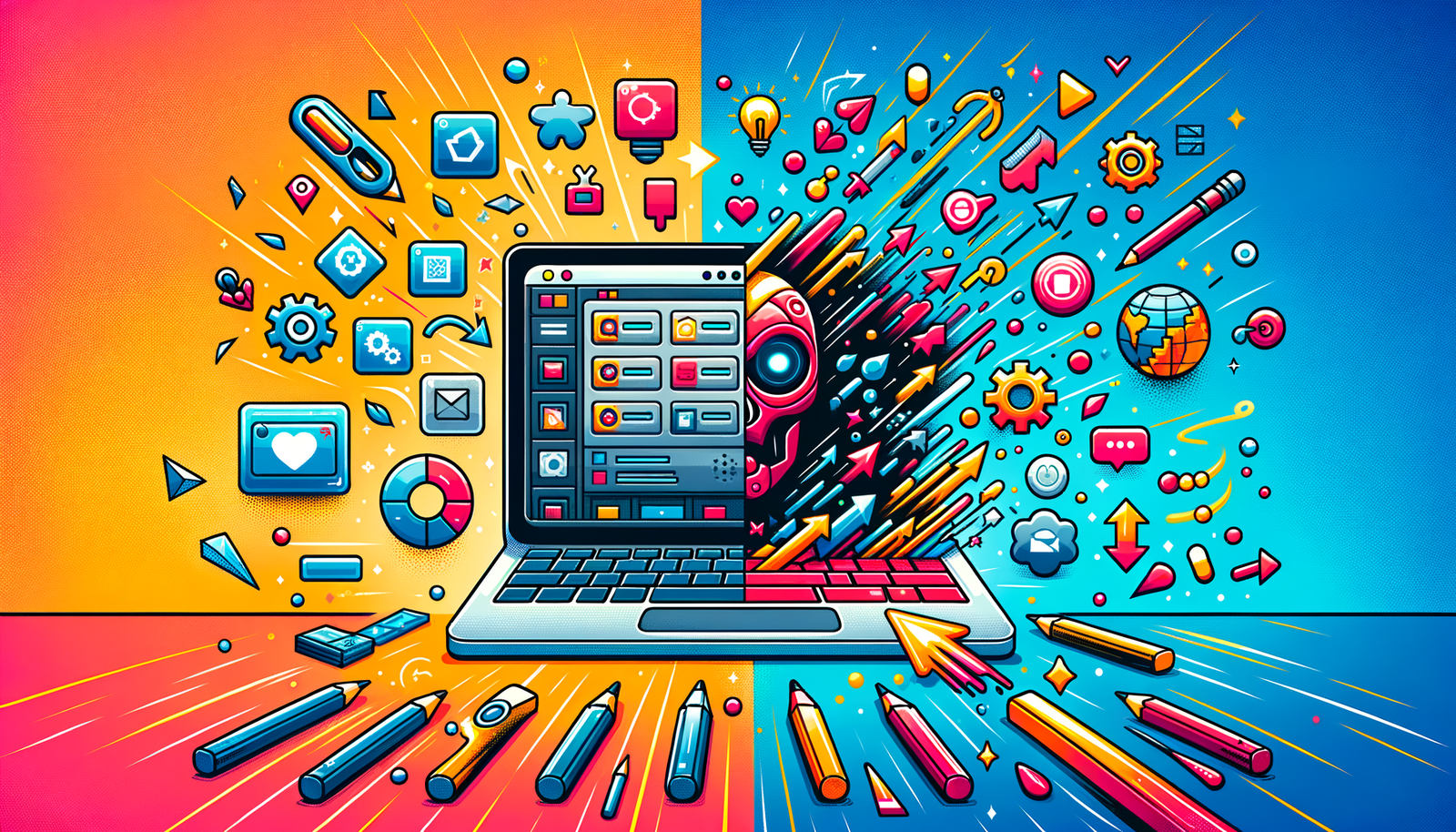Your Cart is Empty
Customer Testimonials
-
"Great customer service. The folks at Novedge were super helpful in navigating a somewhat complicated order including software upgrades and serial numbers in various stages of inactivity. They were friendly and helpful throughout the process.."
Ruben Ruckmark
"Quick & very helpful. We have been using Novedge for years and are very happy with their quick service when we need to make a purchase and excellent support resolving any issues."
Will Woodson
"Scott is the best. He reminds me about subscriptions dates, guides me in the correct direction for updates. He always responds promptly to me. He is literally the reason I continue to work with Novedge and will do so in the future."
Edward Mchugh
"Calvin Lok is “the man”. After my purchase of Sketchup 2021, he called me and provided step-by-step instructions to ease me through difficulties I was having with the setup of my new software."
Mike Borzage
Transforming Design Software with Advanced Customization and Adaptive User Interfaces
April 24, 2025 6 min read


Introduction and Context
Modern design platforms have evolved in spectacular ways over the decades, responding dynamically to ever-changing user needs and a rapidly advancing technological environment. Historically, design software was built on fixed interfaces that dictated a rigid workflow for users, leaving little space for personal creative expression or operational efficiency. With the evolution of technology and increasing expectations, the design industry has undergone a radical transformation. Today, the shift toward **modern design platforms** revolves around building adaptable, user-centric environments that prioritize personalization and intuitive design. This evolution has been fueled by the recognition that every designer’s workflow is uniquely influenced by their creative vision, technical demands, and operational constraints. As the complexity of projects continues to increase, the need for deep **customization** has never been more pronounced, enabling designers to create bespoke workflows that fit their specific project requirements. This emphasis on personalization has spurred the development of software that allows for extensive adjustments ranging from interface layouts to modular component integrations, ensuring that users are empowered to tailor their design environments intuitively. Historically, the progression from fixed to adaptable interfaces can be likened to the evolution of carpentry tools; earlier craftsmen had to invent workarounds for every novel problem, whereas modern craftsmen benefit from highly refined, purpose-built equipment. This analogy illuminates how the integration of customizable elements in design software has not only enhanced aesthetic appeal but also dramatically improved productivity. As design environments grew more sophisticated, software developers began to integrate features that anticipate user needs, such as adaptive user interfaces powered by artificial intelligence. These smart systems continuously learn from user behavior to fine-tune the software’s functionality, enabling a workflow that is significantly more efficient and deeply attuned to individual usage patterns. The historical journey from rigid design templates to the fluid, adaptable systems seen today highlights a fundamental truth: when users are provided with tools that align perfectly with their unique processes, creativity is unleashed and innovation flourishes.
Exploring Advanced Customization Features
Advanced customization has become a cornerstone of state-of-the-art design software, providing a powerful mechanism to enhance workflow efficiency and unlock creative potential. In contemporary design environments, a range of customization options is available that allows users to personalize not only the visual aspects of the interface but also the underlying processes that drive their work. These features include the ability to adjust interface layouts, modify toolbars, design custom workspaces, and automate routine tasks through scripting and workflow automation tools. The benefit of these options is the transformation of a generic design interface into a highly personalized digital workspace that aligns perfectly with the user’s style and functional requirements. This is particularly valuable for those working in industries where rapid iteration and precision are essential, as it reduces the need to navigate cumbersome menus and repetitive procedures. By enabling user-defined settings and modular components, advanced customization empowers designers to quickly modify their working environment to better suit the project at hand. Furthermore, the integration with smart systems that employ adaptive user interfaces represents a significant leap forward. These systems monitor user behavior and continuously learn to optimize the interface, offering layout suggestions, tool adjustments, and even pre-emptive functionality enhancements. Such intelligent adjustments not only streamline the workflow but also foster an environment where users feel increasingly confident and supported in their creative processes. The design software of today supports features such as:
- Customizable menus designed to optimize access to frequently used tools.
- Drag-and-drop interfaces that allow for seamless personalization of workspace arrangements.
- Scripting capabilities which provide bespoke tool integrations that can be aligned with intricate project specifications.
Implementation Strategies and Industry Impact
Effective implementation of advanced customization features necessitates a careful blend of strategic planning, technical proficiencies, and an understanding of industry-specific requirements. Designers and software developers alike are tasked with the challenge of integrating customizable elements into design platforms, with a clear focus on empowering end users. The process begins with adopting best practices that ensure a robust and flexible foundation for customizations. For example, creating modular architectures within the software allows individual components to be easily replaced or updated without disrupting the entire system. This modularity not only facilitates iterative enhancements but also ensures cross-platform consistency and interoperability within diverse design ecosystems. In many cases, adapting to these changes requires developers to incorporate feedback loops in their design processes, where continuous data insights and user evaluations shape future developments. User insights play a crucial role in this context, as they directly inform developers about the most frequently used interfaces and the preferred configurations that aid in quick decision-making. Moreover, designers have found that these advanced customization capabilities have a profound impact on various sectors. Consider, for instance, the domain of architectural design: managing complex project datasets demands flexible interfaces where multiple layers of data can be selectively displayed or hidden. Similarly, in product visualization, tailored rendering settings enable designers to alter lighting, texture, and angle configurations in real-time, ensuring that every nuance of the product is accurately represented. In engineering and additive manufacturing, adaptive simulation tools work seamlessly with customizable workflows to provide precise and real-time feedback on projects. This integration fosters a more intuitive environment where the symbiosis between simulation and design leads to a reduction in iterative errors and significant time savings. To elaborate further, the following bullet points underscore key strategies for effective deployment:
- Utilize modular design frameworks to facilitate ease in updating individual components.
- Implement adaptive user interfaces that dynamically tailor the workspace to user behavior.
- Encourage ongoing user feedback to shift the development focus towards high-demand features.
Conclusion
In conclusion, the transformation of modern design platforms through **enhanced customization** features has fundamentally reshaped the landscape of digital design, engineering, and manufacturing. Empowering end users with adaptable and intuitive tools is no longer a luxury, but a necessity in an environment where creativity and rapid iteration are paramount. The ongoing shift toward user-centered interfaces, combined with the integration of intelligent, adaptive systems, allows designers to optimize their workflows in ways that were previously inconceivable. This strategic empowerment not only simplifies complex design tasks but also encourages a culture of innovation where creativity is amplified by technical precision. Looking forward, the integration of AI-driven personalization and ever-more modular features is expected to further revolutionize this field, giving rise to ecosystems where every component of the software is finely tuned to match individual operational styles and professional demands. The continuous interplay between evolving technologies and user expectations will undoubtedly fuel additional breakthroughs in design software, ensuring that the gap between conceptualization and realization grows even smaller. Future developments promise an era where digital design is seamlessly agile and profoundly responsive to each user’s unique requirements, ultimately driving the industry toward unprecedented levels of creativity and productivity. As this evolution continues, it is evident that customization not only streamlines work processes but also serves as the catalyst for future innovation in the realm of design software development.
Also in Design News

Cinema 4D Tip: Maintain scene scale to prevent floating‑point precision errors
November 01, 2025 2 min read
Read More
ZBrush Tip: Tailoring ZBrush UI Colors for Comfort and Clarity
November 01, 2025 2 min read
Read MoreSubscribe
Sign up to get the latest on sales, new releases and more …



